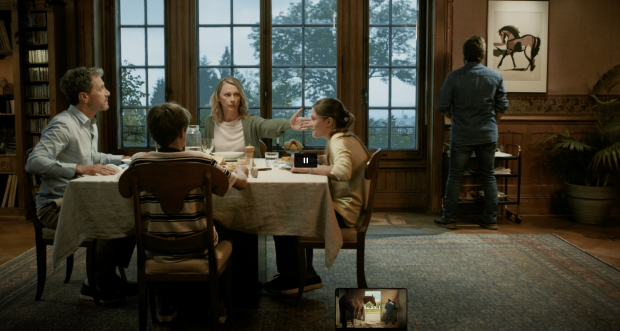Creosote used in a stable years before a trainer moved in has been blamed after a top racehorse tested positive for arsenic.
Hell’s Kitchen, trained by Harry Fry, was found to have arsenic above the permitted level in his system after finishing fourth in the Queen Mother Champion Chase at the 2019 Cheltenham Festival.
The case was cited as a “warning” to others at the British Horseracing Authority (BHA) disciplinary panel hearing on Monday (29 March), even though the trainer was cleared of any culpability.
The likely cause was found to be that the horse had chewed timber beams in his stable that had been treated with a CCA (chromated copper arsenate) wood preservative, which contains arsenic, prior to Mr Fry’s move to the yard in 2014. Mr Fry has since moved yards again, for unrelated reasons.
Arsenic was historically used in creosote timber treatments, before it was banned as an ingredient in the mid-2000s, and can “linger” for years. The BHA started testing for it at the start of 2019 and the hearing was told that while this is the first case to come before the disciplinary panel, it is “not the only case [the BHA] is aware of”.
Mr Fry’s barrister, Roderick Moore, explained that arsenic is a “ubiquitous” chemical element, meaning it is found naturally “all over the place” in soil, water and plants across the world.
The BHA tests to a threshold of 300ng/ml for this reason, and the amount found in Hell’s Kitchen’s urine sample was close to that (337ng/ml). The B-sample was also tested and confirmed the result.
Suspicions that timber in the horse’s stable could have led to the positive test were strengthened when tests, as part of an unannounced visit from BHA inspectors, found arsenic levels in that wood to be more than four times higher than the neighbouring box.
The panel heard that the wet winter meant the horse’s usual daily turnout paddock was unusable, so he was kept in, which they believed could have led to him to chew the beams.
Charlotte Davison, representing the BHA, told the panel there was nothing to suggest Mr Fry had used the wrong creosote.
During the unannounced visit, inspectors found that the wood preservative used by Mr Fry the previous year contained only “negligible amounts” of the element, not enough to result in a failed dope test. The horse and 11 others were tested as part of the unannounced BHA visit, all were negative, and other items in the yard, including feed and supplements, also showing “negligible levels”.
While it could not be said in absolute certainty that the wood in the stable was the definite source, both the BHA’s expert and the expert appointed by Mr Fry agreed it was the most likely cause.
Ms Davison added that the BHA has “no evidence to suggest” the timber in the horse’s stable was not the cause of the positive test.
There was also some discussion, during the hearing, about the debate surrounding possible contributing factor. These included the amount of contaminated wood the horse would have needed to eat — suggested to be around 100g, either in one go or over a number of days — and the possibility that arsenic levels within the timber itself may not be constant. There was also the question of whether the fact the sample was taken straight after the race, when the horse would have been dehydrated, may have had a bearing on the arsenic level in his samples.
Mr Moore told the hearing that Mr Fry had cooperated fully with the BHA, allowing “everything conceivable to be tested” and there was not a single suggestion that he could have done anything further in the way of clean sport.
“His is a state-of-the art training establishment and no stone is left unturned in preventing positive samples,” he said.
“Every known precaution is taken and whenever the BHA gives out advice for trainers to be aware of, that advice is taken on board by Mr Fry. There is, at the moment, no advice about treated timber as I and Mr Fry understand it.”
Article continues below…
You might also be interested in:

Subscribe to Horse & Hound magazine today – and enjoy unlimited website access all year round
The BHA had been looking to penalise the trainer until days before the hearing, but reconsidered after further discussions with Mr Fry’s legal team before Monday and accepted he was not at fault. The panel was of the same view, which meant he did not face any sanctions, other than disqualification from the race and the return of the £21,200 prize money.
“There is a warning here about the danger of treated wood, which will no doubt be recognised by others that may be in the same position,” said panel chairman, Brian Barker QC.
“This has been a difficult case for everybody, but it is a unique case and it will not be a precedent in future cases. Each case is taken on its own effects and own uniqueness.”
Horse & Hound magazine, out every Thursday, is packed with all the latest news and reports, as well as interviews, specials, nostalgia, vet and training advice. Find how you can enjoy the magazine delivered to your door every week, plus options to upgrade to access our H&H Plus online service which brings you breaking news as it happens as well as other benefits.





